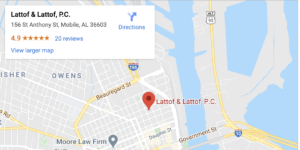What Are Non-Economic Damages?

Accidents are traumatic for everyone involved, but nobody reacts in quite the same way. Some people sustain injuries that significantly alter their lives and relationships. While the person who caused the accident can’t return the victim to their condition before the accident, they can provide financial compensation to make life easier.
Table of Contents
Defining Non-Economic Damages
In civil suits, victims can receive damages as compensation for their losses. The defendant, or at-fault party, may be liable for two types of compensatory damages: economic damages and non-economic damages.
Economic damages cover tangible expenses incurred because of the accident, like medical bills and lost wages. They make up for your financial losses after an injury. Determining compensation for economic damages is straightforward because the victim can provide medical bills, pay stubs, and other documentation to support their claims.
Conversely, non-economic damages compensate for losses and harms that are non-financial, like pain and suffering, emotional distress, embarrassment, loss of enjoyment of life, etc. It’s more challenging to assess non-economic damages because they are subjective. Consequently, non-economic damages can vary between cases even if the general facts appear similar.
Types of Non-Economic Damages
Non-economic damages compensate you for your physical, psychological, and emotional losses after an injury.
There are multiple avenues for claiming non-economic losses in civil cases, including:
- Emotional distress or mental anguish
- Pain and suffering
- Loss of companionship or sexual relations
- Long-term or permanent physical impairment
- Loss of enjoyment of life
Additionally, Alabama courts can assess non-economic damages based on past or future losses, depending on the case. Victims could receive some form of economic damages in each category.
Calculating Non-Economic Damages in Alabama
As noted, non-economic damages are subjective because two people with the same injuries can have completely different experiences.
That said, the courts consider several factors when assessing non-economic damages, including:
- How severe was the injury, and what lasting effects does the victim have?
- How is recovery progressing, and how long is it expected to take?
- Are there any long-term consequences or projected future implications related to the injuries?
- How much is the victim asking for, and how would it impact their lives?
Further, many courts consider the personalities and presentation of all parties involved. Charismatic victims and attorneys can play a powerful role in the amount of non-economic damages awarded.
Are there Caps on Non-Economic Damages?
Some states limit the amount of non-economic damages a victim can receive. In Alabama, there are no caps for non-economic damages in personal injury cases. Alabama used to have a $400,000 cap on medical malpractice claims, but the Supreme Court ruled the cap unconstitutional. The state has not yet attempted to reinstitute these caps.
What is the Multiplier Method?
The multiplier method is a system to determine non-economic damages. This approach uses an injury victim’s economic damages to arrive at an amount for the non-economic damages. The victim’s losses are assigned a number based on the severity of their injuries and the extent of their suffering. One multiplies this number by the amount of economic damages to determine the victim’s non-economic compensation.
In theory, the larger the economic losses, the greater the pain and suffering. While it makes some sense, this method has some significant flaws. First, every person reacts differently to situations because of their unique histories and personalities. Losing a leg could be problematic but workable for somebody who has a sedentary lifestyle, but how would it impact an athlete or delivery driver?
The other problem is how the people involved view the situation. One person may double the economic damages while another may triple them, leading to grossly different numbers.
How Do I Know If I’m Eligible for Non-Economic Damages?
Claimants seeking non-economic damages, like pain and suffering, must file a civil suit within two years of their accident in Alabama. A person typically brings their claims as negligence suits.
To prove the defendant was negligent, you must establish four elements:
- The defendant owed you a duty of care. For example, when somebody gets behind the wheel of a motor vehicle, they have a legal duty to comply with the laws of the road.
- The defendant breached their duty, meaning that the defendant failed to behave responsibly, for example, by driving recklessly.
- The defendant’s breach caused your injuries. You must show that the defendant’s negligent behavior led to your injuries.
- You must have suffered damages.
Recovering non-economic damages can be tricky because it’s so subjective. You may want to retain an experienced attorney to help guide you through the process and secure the best possible outcome. Whether you hire legal counsel or not, it’s in your best interest to keep detailed records about your injury experience, including intangible effects.

